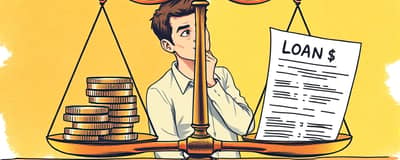Every loan or credit offer tells a story — of dreams made real, emergencies managed, or goals achieved. Yet beneath the surface of headline interest rates lies a deeper truth: the true cost you will bear. Learning to compare APRs across different offers is like unlocking a secret map that guides you to the most cost-effective path. By mastering this skill, you not only save money but also gain total financial clarity for every decision you make.
Understanding APR and Its Importance
The Annual Percentage Rate (APR) is more than just a number printed on your loan documents. It is an annualized rate representing total cost — the interest plus qualifying fees, expressed as a yearly percentage. Unlike a simple interest rate, the APR encapsulates what you’ll truly pay over the life of the loan under standard conditions.
Within the world of APRs, you’ll encounter two key distinctions. First, the nominal vs effective APR distinction: the nominal APR is the advertised rate without compounding effects, while an effective APR (or APY/EAR in the credit card realm) factors in how often the interest compounds. Second, you’ll see fixed versus variable rates. A fixed and variable APR explained comparison helps you decide between the stability of an unchanging rate and the risk—potentially reward—of a rate tied to market indices.
Why Comparing APRs Matters
Choosing a loan or credit card based solely on the advertised interest rate is like judging a book by its cover. When you compare APRs, you:
- clarity in borrowing decisions: You level the playing field across offers with different fee structures.
- Gain insight into the full cost of borrowing annually, avoiding hidden surprises.
- Develop a powerful decision-making tool that maximizes your financial well-being.
- Protect yourself from unexpected hikes in variable or penalty rates.
Step-by-Step Guide to Compare APRs
Tackling multiple loan or credit card offers can feel overwhelming. Break it down into clear, actionable steps to ensure you’re making the best choice:
- Step 1: Gather Information. collect the APR, interest rate and fees for every offer, including origination, application, or annual charges.
- Step 2: Standardize Terms. Align comparisons by using the same loan amount, term length, and repayment schedule to avoid apples-to-oranges confusion.
- Step 3: Factor in Fees. Incorporate all upfront costs—origination fees, closing costs, membership charges—into the APR calculation to see the true cost.
- Step 4: Calculate or Verify APR. Use the lender’s APR figure or compute it yourself
- Step 5: Evaluate Total Cost. Focus on the APR, not just the base interest rate, to gauge overall expense.
- Step 6: Watch for Variable and Introductory Rates. Check what happens when promotional periods end or when reference indices change.
Additional Factors to Keep in Mind
APR comparison is essential, but a few extra elements can tip the scales in your decision:
compounding frequency affects actual costs — daily compounding on credit cards can drive the effective rate above the nominal figure. Always check whether the APR reflects simple or compounded interest.
penalties for early loan payoff — some lenders charge you for paying off a loan ahead of schedule. Those fees won’t always appear in the APR, so read the fine print.
Loan term length can also shift your perspective: shorter terms may carry higher APRs if upfront fees loom large against the principal. Finally, align the product with your needs — a home mortgage, auto loan, or personal line of credit each serves distinct purposes.
Common Mistakes to Avoid
- Comparing APRs for different loan types or durations without standardizing terms.
- Overlooking hidden fees or recurring charges that inflate the true cost.
- Assuming a low introductory APR will last beyond the promotional window.
- Neglecting to check for prepayment penalties that diminish savings.
Real-World Comparison Example
Imagine you receive two offers for a $10,000 personal loan with a three-year term. Which one is cheaper?
Although Loan B boasts a lower interest rate, its higher fees push its APR above Loan A’s. Choosing Loan A saves you on average 0.5% in annual cost, translating to hundreds of dollars over the loan’s life.
Conclusion: Empowered Borrowing Decisions
When you master the skill of comparing APRs, you transform from a passive borrower into a strategic navigator of your financial journey. By focusing on the empower you to make informed choices embedded in each offer, you unlock opportunities to save money, reduce stress, and realize your goals faster. Armed with clarity, you can confidently choose the path that aligns with your aspirations and budget, knowing you’ve made the smartest choice for your future.














